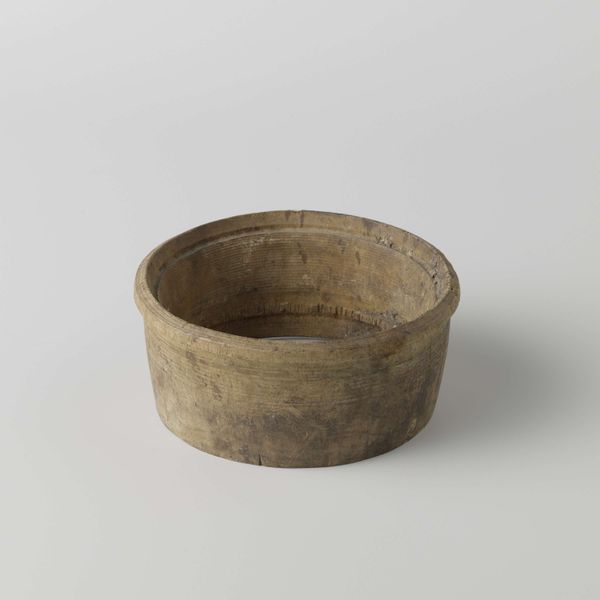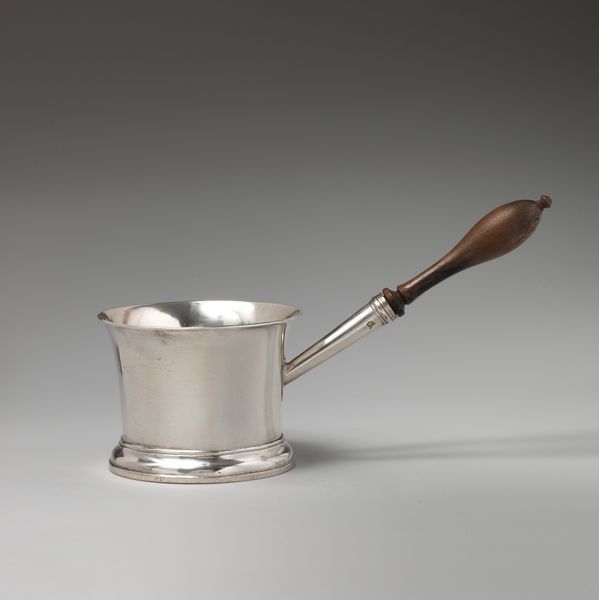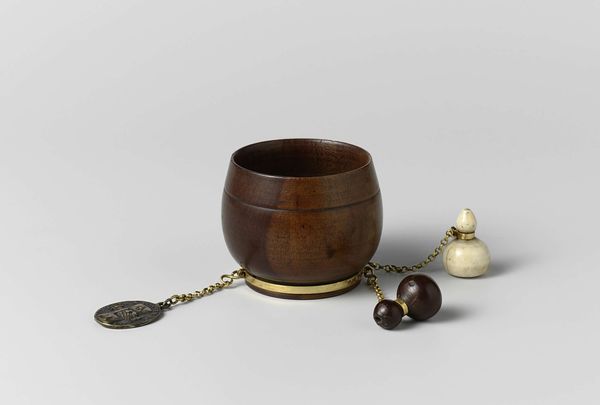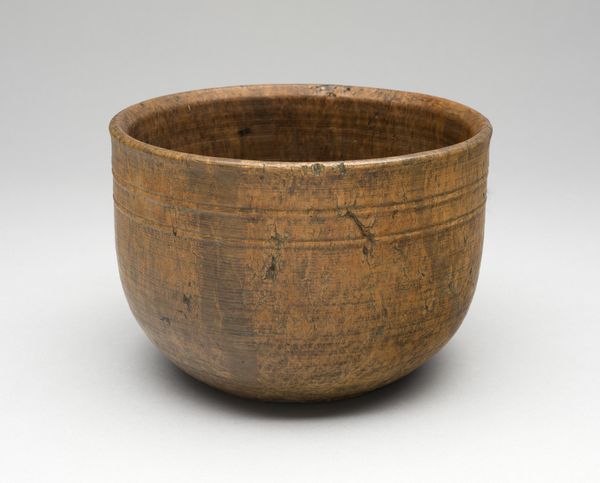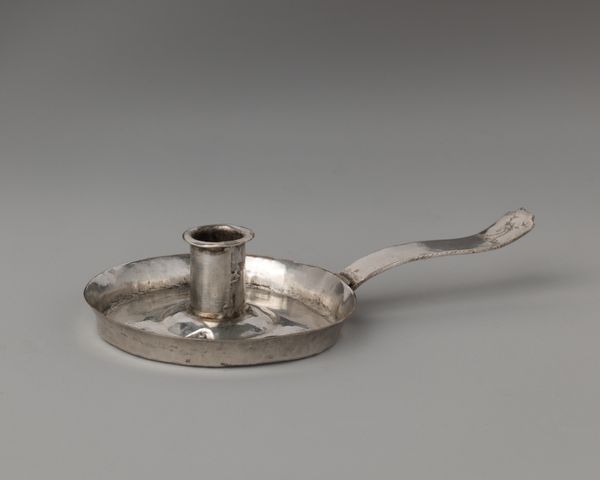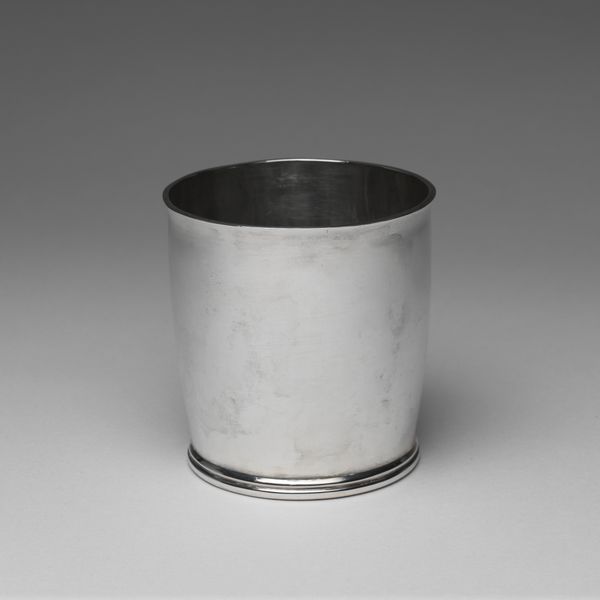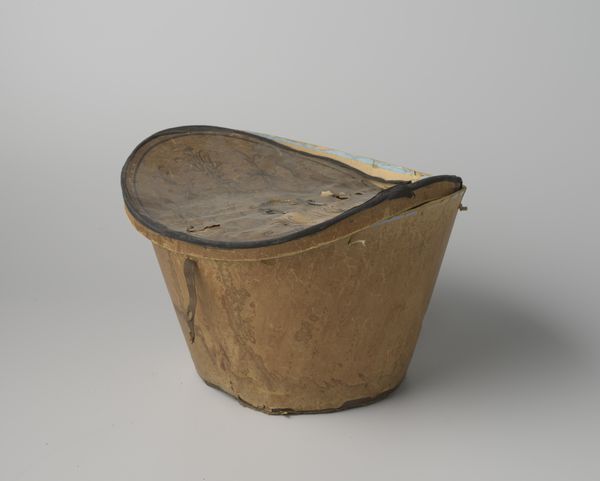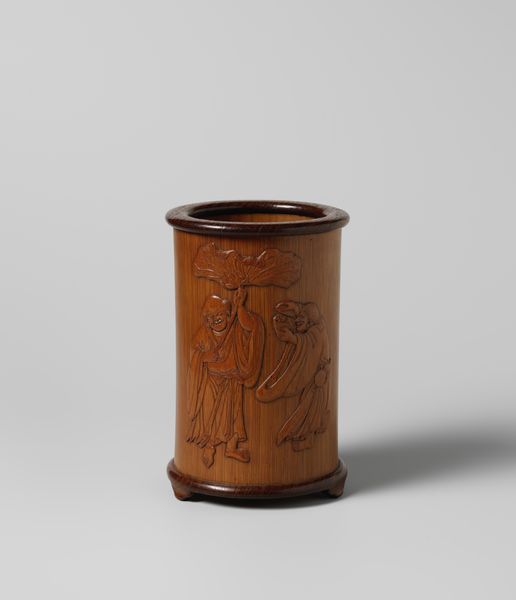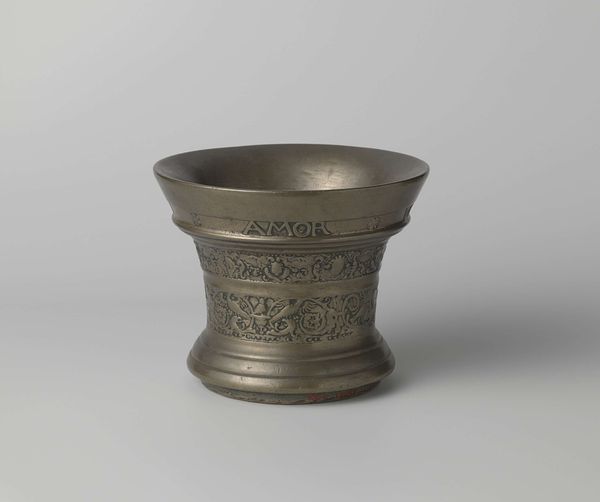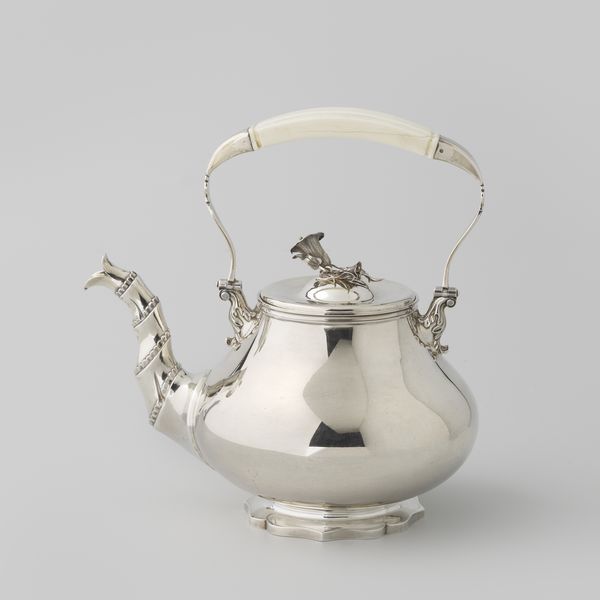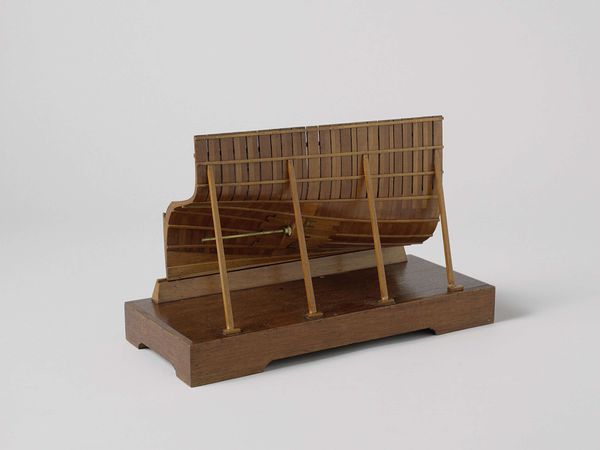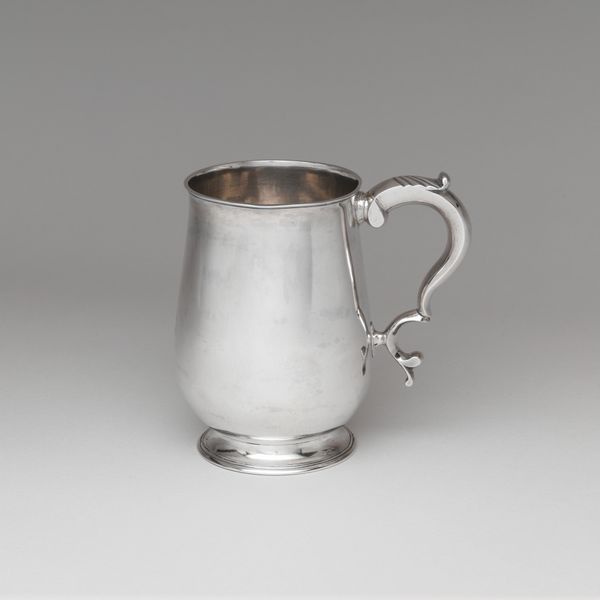
ceramic, sculpture
#
neoclacissism
#
ceramic
#
sculpture
#
decorative-art
Dimensions: mortar: 2 5/8 × 5 5/8 in. (6.7 × 14.3 cm)
Copyright: Public Domain
Editor: Here we have a ceramic mortar and pestle, crafted sometime between 1775 and 1785 by Wedgwood and Bentley. It’s deceptively simple. But what symbolic weight do you see in this object? Curator: Well, immediately, I’m struck by its form. A mortar and pestle inherently represents transformation. It’s an agent of change, taking a raw element and refining it. Consider the historical context: the late 18th century was a time of massive social and political upheaval. Does this object participate in the symbol of change? Editor: Interesting! I hadn’t considered it within that framework. The materials too; the cool ceramic feels deliberate. Curator: Precisely. The Neoclassical movement, to which this piece belongs, often evokes a sense of order and reason. The very act of grinding suggests not only destruction but also a careful, measured control over the process. What ingredients could have been in it, or about to be placed there? Think of medicine or food. Is the result a source of nourishment, or something more ambiguous? Editor: I guess it all depends on the contents and what these might signify in different cultures! So, a tool of both destruction and creation, deeply intertwined with the cultural meanings we project onto it. Curator: Indeed. An object seemingly mundane, revealing layers of meaning with each use and each gaze. Editor: Thank you, I will certainly never look at these objects in the same way again.
Comments
No comments
Be the first to comment and join the conversation on the ultimate creative platform.
